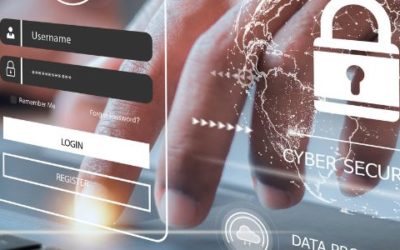Why Cyber Liability Insurance Costs Keep Rising — and 6 Smart Ways to Keep Yours Affordable
Cyber Liability Insurance Is Getting More Expensive — Here’s Why That Matters
You’re not alone if you’ve seen your cyber insurance premiums rise over the past few years. Businesses of all sizes — especially those in finance, healthcare, law, and professional services — are seeing double-digit increases year over year. And it’s not just about the cost. Many insurers are tightening requirements, limiting coverage, or denying policies altogether.
Why? Because cyberattacks are more frequent, more sophisticated, and more expensive to clean up than ever before. If your business doesn’t meet current cybersecurity standards, your policy could cost more, or get canceled.
In this post, we’ll break down what’s driving the higher premiums and give you six practical ways to lower your cyber liability insurance costs without leaving your business exposed.
Why Cyber Liability Insurance Premiums Are Rising
Cyber insurance used to be a checkbox — a minor line item that most companies didn’t think twice about. Today, it’s a significant cost driver, and for good reason.
Ransomware attacks have surged. High-profile breaches like those at Change Healthcare, MGM, and even city governments have shown how widespread and expensive cybercrime has become. According to the FBI’s Internet Crime Report, losses from cybercrime reached $12.5 billion in 2023, up from $10.3 billion the year before.
Insurance providers have taken notice. The average cost of a cyber insurance policy rose by 62% in 2022 alone, and the trend has continued. Why? Because most companies aren’t prepared. When cybercriminals strike, insurers are left holding the bill — and they’re responding with:
-
Tighter eligibility requirements
-
Stricter application reviews
-
Higher premiums and deductibles
If your coverage is getting more expensive (or harder to qualify for), it’s not just bad luck. It’s the market adjusting to risk — and it’s up to you to reduce that risk if you want to keep costs down.
6 Ways to Lower Your Cyber Insurance Costs Without Leaving Your Business Vulnerable
Insurance companies reward businesses that take cybersecurity seriously. If you want to avoid sky-high premiums (or a policy denial), these are the areas where you need to step up.
1. Implement Multi-Factor Authentication (MFA)
MFA is one of the most effective ways to stop unauthorized access. Insurers now expect it across the board, especially for email, remote access, and administrative accounts. If you’re not using MFA, your application will either be denied or priced much higher.
2. Use a Reliable Endpoint Detection and Response (EDR) Solution
Basic antivirus isn’t enough. Cyber insurers are looking for advanced, monitored solutions like EDR to detect and contain threats in real-time. These tools act as an early warning system and are a must-have for any serious security plan.
3. Maintain Secure, Encrypted Backups
You need daily, verifiable backups — preferably stored offsite or in a secure cloud environment. And insurers will want to know that they’re encrypted, tested regularly, and not connected to your production network.
4. Run Regular Security Awareness Training
Employees are your first line of defense — and your biggest risk. Many insurers now require proof that your staff receives phishing and cyber hygiene training. If you don’t have a training program, it’s time to start one.
5. Get a Vulnerability Assessment (and Fix the Issues)
A professional scan of your systems will uncover weak spots before attackers do. Some policies require a vulnerability assessment to even begin underwriting. Make sure you’re also addressing whatever is found — not just checking the box.
6. Work with a Managed IT Provider Who Knows the Landscape
Partnering with a proactive IT team like Network Computer Pros can make all the difference. We don’t just throw tools at the problem — we build a layered defense that aligns with what insurers are asking for. And we’re happy to help you navigate applications, audits, and compliance questions.
Take Control Before Your Renewal Date
Cyber insurance isn’t just a checkbox anymore — it’s tied directly to how well your business is secured. Carriers are asking tougher questions, and the wrong answers could mean higher premiums, lower coverage limits, or outright denial.
At Network Computer Pros, we help small and mid-sized businesses meet these new demands without the guesswork. We know what insurers are looking for, and we put the tools, policies, and protections in place to check every box while keeping your systems running smoothly.
Let’s make sure your business is secure, insurable, and ready for anything.
Originally published: June 2022 | Updated: June 2025
You might also like
The 5 Symptoms of Bad I.T. Plaguing Your Business
Welcome to the Network Computer Pros technology clinic, where we diagnose and treat the I.T....
IT Billing Model: 6 Major Benefits of Fixed-Rate Services
Managed IT Services offer significant advantages over traditional hourly billing for businesses in...
Latest LastPass Scam: Everything you should know
Understanding and Protecting Yourself from the Latest LastPass Scam After a sophisticated...



